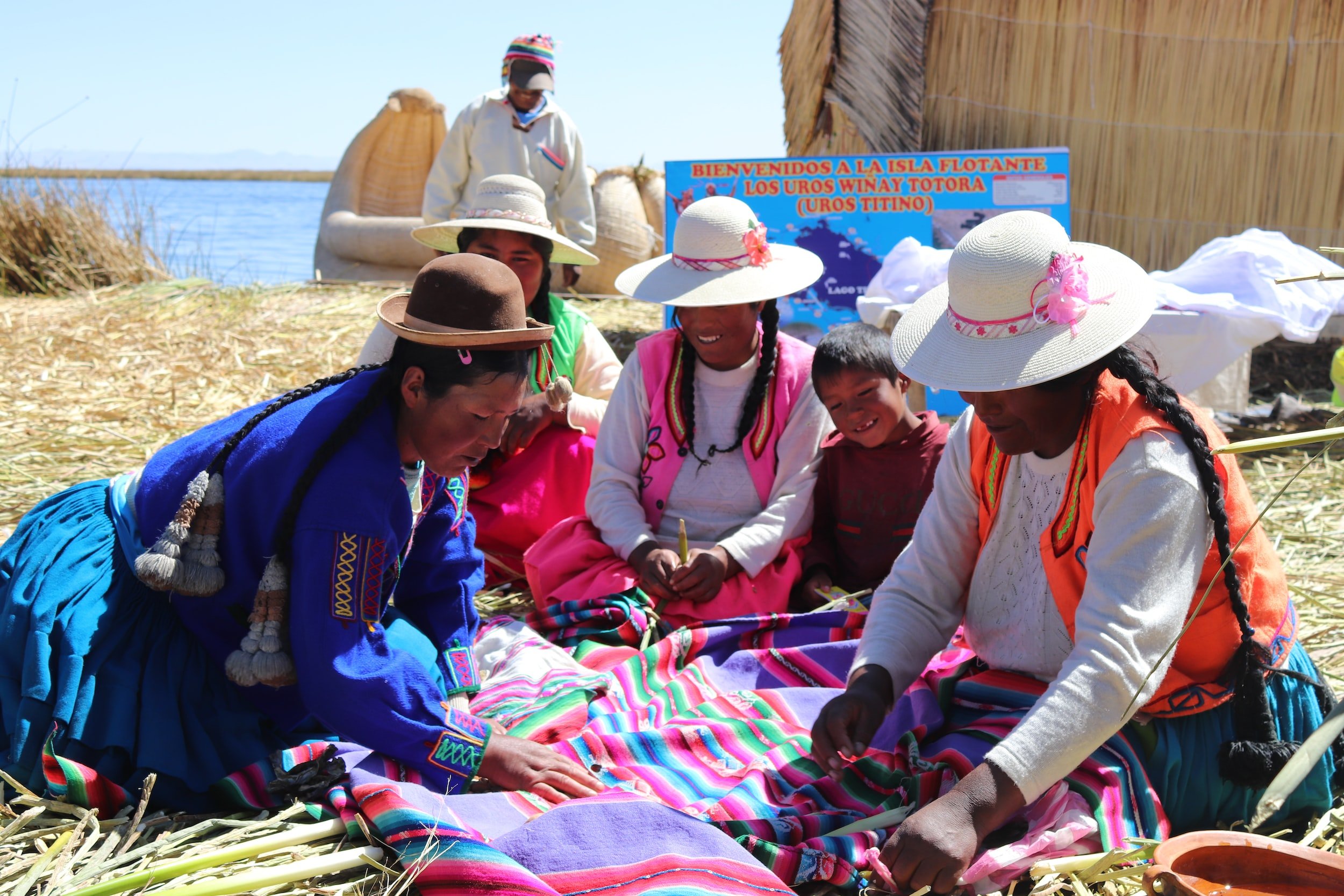Create a Research Agenda and Personal Academic Brand: Webinar and Q & A Part 1
Janet Salmons, PhD Research Community Manager for Sage Methodspace, answers your research-focused questions and Jessica Offenberger, Editor, Sage Journals, answers your journal-focused questions.
Creating a research agenda that furthers your academic goals is not a simple process!
Many questions were posed by attendees of the Sage webinar, Create a Research Agenda and Personal Academic Brand, with panelists Dr. Mark Carrigan and Dr. Jessica Sowa. I’ve organized them by topic and linked to additional resources. Since we had so many questions, we will respond in two posts with answers and related resources.
In this post, learn about:
Developing a Research Agenda
Finding Literature and Creating Literature Reviews
Getting Published in Journals
Finding Research Funding
In a subsequent post find responses about:
Conducting Research and Writing with AI
Mentoring and Supervising Students
Discussing Interdisciplinarity
Finding or Establishing Your Network On- or Offline
Setting Priorities
Developing a Research Agenda
Question: How can I set my research agenda to fit international readers?
Answer:
Read, listen, ask questions. Start by looking at the academic literature and as appropriate, professional publications to learn about your research topics from global perspectives. Look at the Directory of Open Access Journals, www.doaj.org, to find smaller journals from countries of interest. Look for globally-focused scholarly organizations, associations or chapters, to find communities of interest.
Make friends, find partners, in other parts of the world. For example, an invitation to contribute to a Sage webinar turned into a valued professional friendship between Janet and Natalia Reinoso Chávez, a researcher in Bogota, Columbia.
Take a look at The TRUST Code: A Global Code for Equitable Research Partnerships. You can also read this open-access book: Ethics Dumping Case Studies from North-South Research Collaborations.
Writing with international readers in mind is, literally, a different mindset. Small things matter! For example, as someone who lives in North America, I have to check myself when I am writing about time frames. Instead of discussing an event “in the spring,” I would say, “in April.” If I am writing about something specific to my geographic area I will note that point, rather than writing something that conveys an assumption that what I am saying is universal.
By the way SAGE Editors do not discriminate in location of authorship. We take great care to advise our reviewers not to make judgements about a paper based on personal, financial, intellectual biases or any other considerations than the quality of the research and written presentation of the paper. SAGE Editors are also committed to maintaining and promoting consistent ethical policies for their journal. If an author believes the decision regarding their manuscript was affected by the publication ethics breach, they should review SAGE’s Complaints & Appeals Procedure here: https://uk.sagepub.com/en-gb/eur/complaints-and-appeals-procedure. Some journals will not accept papers that are not new and noteworthy, so that may play a part in acceptance/rejection. We recommend you check the manuscript submissions guidelines prior to submission for full information.
Learn more! See this collection of Methodspace posts about culture and research
Questions: AI is going to become more integrated into academia and scientific research. How do we utilize this tool to write and establish our research identity? Can you suggest safe AI tools that can be used for research - I mean those which are based on research ethics and confidentiality for data security?
Answer:
That is a tough set of questions in a rapidly changing environment, and there is no simple answer. If you are trying to establish your credibility as an expert, focus on your own original writings. Look carefully at any tools you use. Also, review the guidelines for any publications to which you want to submit a manuscript. Some journals have restrictions, others prohibit the use of AI in writing.
It is even more difficult when it comes to AI tools in the research process. Commercial products are typically do not prioritize protection of data at the level scholars need. Researchers studying sensitive topics or vulnerable populations have more pressing needs to protect sources or participants’ identities.
In general, I would advise against entering raw data into an AI tool such as Chat GPT, because the data cannot be retrieved or protected. If you are using a videoconferencing platform, check to make sure that the company does not allow AI companies access to their archives. Look for the option to record to your hard drive, rather than the company’s servers, and delete copies on the server.
It is important to have a plan for data management and retention before starting a research project. This plan should take into account factors such as the nature of the data, the length of time the data should be retained, and the legal and ethical requirements for data destruction. Once you have a plan that fits your project, you can choose appropriate tools.
Finding Literature and Creating Literature Reviews
Question: How do you summarize previous literature?
Answer: That depends on the nature of the literature review. Some literature reviews focus on the nature of the problem, others focus on causes or contexts, or on theories, or on methodologies. Look at the literature review as a research project unto itself - which means you need to identify a purpose and a sampling strategy.
Question: What is the best way to quickly identify gaps?
Answer: Ah ,literature reviews are rarely quick! I suggest creating a simple table in Word or Excel, and making notes as you go. Create headings that relate to your priorities, whether subject matter or methods focused. Here are two examples:
Or
Once you have made notes about each article, you can scan the collection and identify potential gaps. Then you can return to the library and see whether you missed studies that covered this gap, or not.
Perhaps your problem as been extensively studied using quantitative methods, but no one has interviewed people experiencing it. In which case you could argue that there is a gap in understanding individual perspectives, and propose a qualitative study. Or maybe you can see that the problem has only been studied with urban populations, or populations with a particular characteristic such as age range. Then you can argue for the need to study the problem with a rural population, an older or younger population.
If you are early in your academic studies, begin this classification process as you read articles for coursework. This kind of background research will make it, yes, quicker, when you get to the point where you are proposing your own research project.
Question: How we can tackle with problem when we don't have literature on that particular problem?
Answer: Many scholars have been in this position before. Publishing papers in emerging fields is what adds to the body of knowledge, but it takes time to do research and get published, so new problems or emerging issues might not have reached scholarly journals. However, there are other reasons why you might not be finding literature about the problem. Here are a few, with some suggested strategies:
Has terminology changed? For example, a term like “emotional intelligence” might have been called “soft skills” in earlier studies. Look for synonyms, or search for related concepts.
Has the topic been studied in another field or discipline? When working on my own dissertation, I could not find resources in the field of education, but did find resources in business journals. Look in different databases that include journals in disciplines outside of your field of study.
Look at other published papers within the emerging field to see how they frame their literature reviews. Also, you can use their descriptions of limitations as a basis and justification for your study.
Broaden your search terms, and look at the larger context for the problem.
Learn more! See this collection of Methodspace posts about literature reviews
Getting Published in Journals
Question: How do you publish in high-end journals?
Answer:
The most important factor is first scouting what is a good match for your article in terms of scope and intended audience. Most publishers have journal finders to help with this. From there you’ll want to carefully read the aims and scope. Many journals will reject a paper outright because it does not exactly match the scope or intended audience. One thing you can do is look through recently published content before submitting to a journal to see if it looks to be similar to what you are wanting to publish.
Scope and quality of the publication do not always equate to high Impact Factor or rank. Be sure that the papers being cited are cited for the right reasons. Save your research for right journal audience. If you are looking at Journals that are within a similar scope and your paper matches the journal(s) requirements and the journal(s) audience, then you can boil down to the specifics and start comparing turnaround time, rank, and acceptance rate, among other metrics.
Keep in mind that you might not start at the top! Getting published in any journal, or publishing a book chapter, will be valuable experience and help you learn how to navigate the publication process.
Your own priorities and publication agenda might boil down to university tenure and promotion policies at your institution or the institution where you aspire to work. Some universities do not count publications in non-ranked or indexed journals, or with journals that have a low IF. Some do not count book or book chapters as well. Others are more flexible, and might consider your online presence using tools like Altmetric.
If you are looking at a career path that includes consulting, working for a governmental or non-governmental agency, or a business research setting, you might want to look at professional publications as well as scholarly journals.
Once you have found your first choice for publication, read the author guidelines carefully to also avoid any pitfalls there. If you are trying for publication in a high impact journal, you’ll have better luck if you’re also publishing on something novel or unique. If you strictly follow the author guidelines and do your homework in selecting the right journal that matches your research and any institutional or funding requirements, all of these factors will speed up the review process and hopefully minimize the trade-offs you face.
You might be interested in this previous webinar about finding the right journal.
Question: Why are some journals in Sage not indexed by Scopus?
Answer: Scopus has indexing requirements that journals have to meet before applying. If a journal is a new launch, for example, it will not yet be eligible for Scopus indexing. Sometimes Scopus also prefers for a journal to already have built a citation base, or to publish a certain amount of content per year. It is of course Sage’s goal to have all of our journals apply for Scopus indexing as soon as they are ready and meet all requirements. The majority of Sage journals are already indexed in Scopus.
Open Access Journals
Question: It is big issue for researchers from developing countries to pay the journal fee [are there options for getting it waived or covered?
Answer: SAGE’s gold open access journals do offer waiver options. Read more here about SAGE’s policy. SAGE partners with the Research4Life program and authors from any of the countries listed in Group A and Group B are automatically eligible to receive a full APC waiver. If a country is not listed, the corresponding author of an accepted article can submit a waiver request directly to SAGE using the email address openaccess@sagepub.com. There is also still the option to publish free of charge under the traditional subscription (what we now call hybrid) model, and while we are committed to promoting Open Access, this is the path we would encourage in these circumstances.
Finding Research Funding
Questions:
How can a low-resource academic institution be more efficient in developing a sustainable research agenda amidst funding and other constraints?
Answer:
You might be interested in this previous webinar in the series: Guidance for researchers from low-income countries.
Securing grant funding can be challenging in lower-income countries or developing countries where funding agencies may be limited, and individuals may not have regular employment with institutions. However, there are still potential avenues to explore. Here are some tips:
International Funding Opportunities: Look for international funding opportunities that are open to applicants from various countries, including lower-income or developing countries. Many international organizations, foundations, and philanthropic entities offer grants specifically targeted at supporting research and development projects in these regions.
Bilateral and Multilateral Collaboration: Seek partnerships with researchers and institutions in other countries for collaborative projects. Bilateral or multilateral cooperation can provide access to funding opportunities that may be available through collaborations between institutions in different countries.
Non-Governmental Organizations (NGOs): Investigate funding options provided by non-governmental organizations that focus on development, humanitarian work, or specific fields of interest. NGOs often offer grants or project funding to support initiatives that align with their mission and objectives.
Regional Funding Initiatives: Explore regional funding initiatives or organizations that support research and development projects within a specific geographical area. Regional development banks, scientific associations, or regional funding programs may have specific grants or funds aimed at supporting research and innovation in the region.
Government Programs and Agencies: While funding agencies may be limited in lower-income or developing countries, government programs or agencies sometimes provide grants or research funding for specific sectors, fields, or priority areas. Stay informed about government initiatives or funding schemes that support research and development in your country.
Crowd-Funding and Philanthropy: Consider alternative funding options such as crowd-funding platforms or engaging with philanthropic individuals or organizations interested in supporting research or social causes. These avenues can provide an opportunity to gather financial support from a broader community.
Research Fellowships and Scholarships: Explore research fellowships, scholarships, or training programs offered by international organizations, universities, or research institutions. These opportunities may provide financial support and resources for research projects, capacity building, or academic advancement.
Seek Institutional Support: If you are not a regular employee of an institution, consider collaborating with academic or research institutions that can provide support, resources, and access to funding opportunities. Establish partnerships with universities, research centers, or NGOs that can help strengthen your research proposal and enhance your chances of securing funding.
Grant Writing Support: Seek assistance from professionals or mentors experienced in grant writing. They can provide guidance on structuring your proposals, identifying suitable funding opportunities, and improving the competitiveness of your applications.
Networking and Collaboration: Actively engage in networking activities, attend conferences, seminars, and workshops to connect with researchers, potential collaborators, and funding organizations. Building relationships and collaborations can lead to new funding opportunities and access to resources.
While the funding landscape may present challenges, perseverance, resourcefulness, and proactive engagement can increase your chances of finding grant funding, even in lower-income or developing countries. It may require exploring multiple avenues and leveraging various resources to secure the necessary support for your research endeavors.
Websites and databases aggregate funding opportunities from various sources internationally. While it's challenging to find a single website that encompasses all funding opportunities globally, the following platforms are widely used to search for funding across different countries and disciplines:
GrantForward (formerly IRIS): GrantForward is a comprehensive database that lists funding opportunities from various disciplines and sources worldwide. It allows users to search for grants, fellowships, and other funding opportunities based on their specific research interests.
Pivot: Pivot is a database provided by ProQuest that offers a vast collection of funding opportunities, including grants, fellowships, and awards. It covers a wide range of disciplines and allows users to search for funding based on their research interests, career stage, and geographic location.
Research Professional: Research Professional is an online platform that provides access to funding opportunities, news, and research policy information. It covers funding opportunities from global sources, including governmental, nonprofit, and private funding agencies.
EURAXESS: EURAXESS is a European initiative that provides information on research funding and career development opportunities across Europe. It offers a database of funding opportunities, job postings, and other resources specifically targeted at researchers in Europe.
National Funding Agencies: Many countries have their own national funding agencies that offer funding opportunities for research, innovation, and academic pursuits. Examples include the National Science Foundation (NSF) in the United States, the Research Councils in the United Kingdom, and the Deutsche Forschungsgemeinschaft (DFG) in Germany. Visiting the websites of these agencies can provide access to country-specific funding opportunities.
Academic Institutions: Universities and research institutions often maintain databases or portals that compile internal and external funding opportunities for their faculty, staff, and students. Check with your institution's research office or visit their website to explore available funding resources.
It's important to note that funding opportunities can vary greatly depending on the field, location, and other criteria. Therefore, it is advisable to explore multiple sources, including discipline-specific databases, professional networks, and local funding agencies, to ensure comprehensive coverage of funding opportunities relevant to your specific needs and interests.
You conducted your research and realized that you found something novel preliminary but you need funding to continue the work to a more in depth level where you can actualize the findings. What do you do to get funding for this work when you actually do not own your own lab but using someone's lab?
Answer: It sounds like you will need to partner with a lab owner, who might require a percentage of the research funding to cover overhead expenses. Check with the development office if you are in a university - there are usually set percentages to cover such expenses.
Missed the webinar? Watch it here!
Join How to Do Research and Get Published webinars in 2024!
Find coming events and registration links for monthly webinars.







































